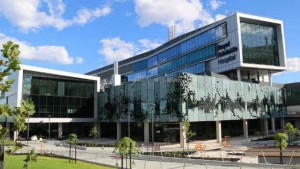Home » Commentary » Opinion » Hospital a Taj Mahal
· Ideas@TheCentre

 This week saw the opening of Australia’s most expensive building — the new Royal Adelaide Hospital. The Royal Adelaide saga has had its share of political controversy, dissension, threatened walk outs, peace agreements and court appearances.
This week saw the opening of Australia’s most expensive building — the new Royal Adelaide Hospital. The Royal Adelaide saga has had its share of political controversy, dissension, threatened walk outs, peace agreements and court appearances.
However, the gigantic $2.4 billion in capital cost is just the start of the impost on taxpayers. The final bill be will north of 10 billion dollars over thirty years. The SA government is on the hook for one million a day till 2046 — and this will only cover the initial building, ongoing maintenance and provision of non-clinical services in accordance with the private public agreement struck by the state government.
But according to the myths that rule the health debate, this must mean South Australians finally have some good economic news. While the cost of everything else in the state is increasing, led by the highest electricity prices in the nation, the people of South Australia can rest easy in the knowledge they will continue to receive state-of-the-art health care for ‘free’.
This, of course, is equivalent to the South Australian state treasurer’s voodoo economics claim that the state budget has a surplus ‘net operating balance’ for 2017-2018.
The even bigger irony is the warnings by health bureaucrats about a ‘honey pot effect’ — hordes of patients with minor aliments piling through the front doors.
With 800 beds, of which all inpatient beds are single rooms, 40 operating theatres, state of the art technology and “relaxing and healing spaces” who can blame the punters for seeking the bounty that politicians have promised.
The further irony is that the Royal Adelaide has an emissions reduction target of 50% compared to other hospitals.
If only — before this Taj Mahal of a health project was ever conceived — the boffins had thought of a health policy offset instead of pouring even more money into bricks and mortar hospital infrastructure.
The better strategy for the health of the people of South Australia — and the health of their wallets — would have been for the South Australian government to have listened to the decades of research showing that health care dollars are far better spent preventing people from going to hospital than building new ones. Another tragic example of how great research and ideas fall on deaf ears when hands are in the money pot.
Hospital a Taj Mahal